1910s
Woodrow Wilson on the Make
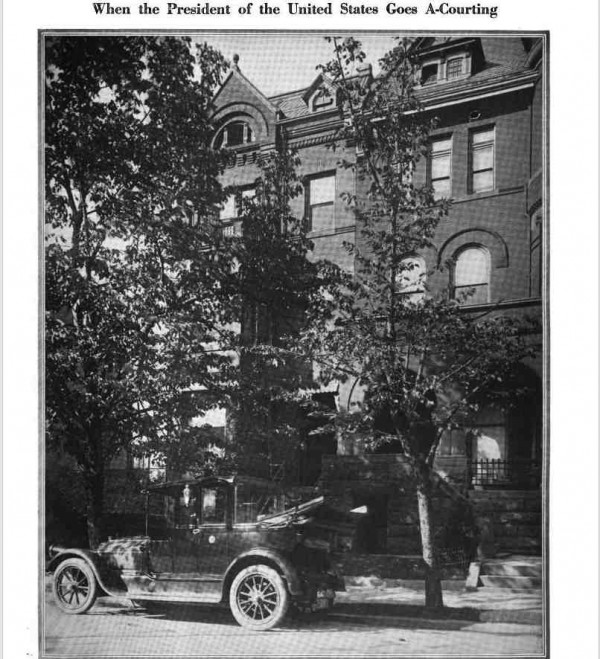

[Click caption for readability]
No escape from the media, even in 1915, as President Wilson courts Edith Galt.
Original photo here.
Posted By: Paul - Wed Mar 25, 2015 -
Comments (0)
Category: Government, Politics, Husbands, Wives, 1910s, Cars
May Pierstorff - The Human Package
From the National Postal Museum:May's parents decided to send their daughter for a visit with her grandparents, but were reluctant to pay the train fare. Noticing that there were no provisions in the parcel post regulations specifically concerning sending a person through the mails, they decided to "mail" their daughter. The postage, 53-cents in parcel post stamps, was attached to May's coat. This little girl traveled the entire distance to Lewiston in the train's mail compartment and was delivered to her grandmother's home by the mail clerk on duty, Leonard Mochel.

Another "human package" discussed here on WU was Johann Beck, who in 1901 shipped himself across the Atlantic in a box.
Posted By: Alex - Sun Feb 15, 2015 -
Comments (2)
Category: 1910s
The Mystery of the Leaping Fish
This short, silent comedy is a bit of classic weirdness from 1916. Apparently it's quite well known, even considered a cult classic. But I hadn't heard of it before, so perhaps it'll be new to you too. Wikipedia offers this description:Fairbanks's character otherwise lampoons Sherlock Holmes with checkered detective hat, clothes and even car, along with the aforementioned propensity for injecting cocaine whenever he feels momentarily down, then laughing with delight. A device used for observing visitors, which is referred to in the title cards as his "scientific periscope", bears a close resemblance to a modern closed-circuit television. What is apparently a clock face has "EATS, DRINKS, SLEEPS, and DOPE" instead of numbers.
The film displays a lighthearted and comic attitude toward Coke Ennyday's use of cocaine and laudanum, while he catches a gang of drug smugglers, he does so after consuming most of their opium. One of the actresses appearing, Alma Rubens, later became addicted to morphine and died young.
Posted By: Alex - Wed Feb 04, 2015 -
Comments (5)
Category: Drugs, Movies, 1910s
The War Against Kissing
Back in 1911, Imogene Rechtin led a campaign against kissing, as leader of the World's Health Organization (which, to clarify, had nothing to do with the UN's World Health Organization, founded in 1948). Her followers wore buttons that read, "Kiss Not." One newspaper at the time remarked, "Judging by the facial features of the presidentess of the cult appearing in the public prints, she is immune without wearing the button."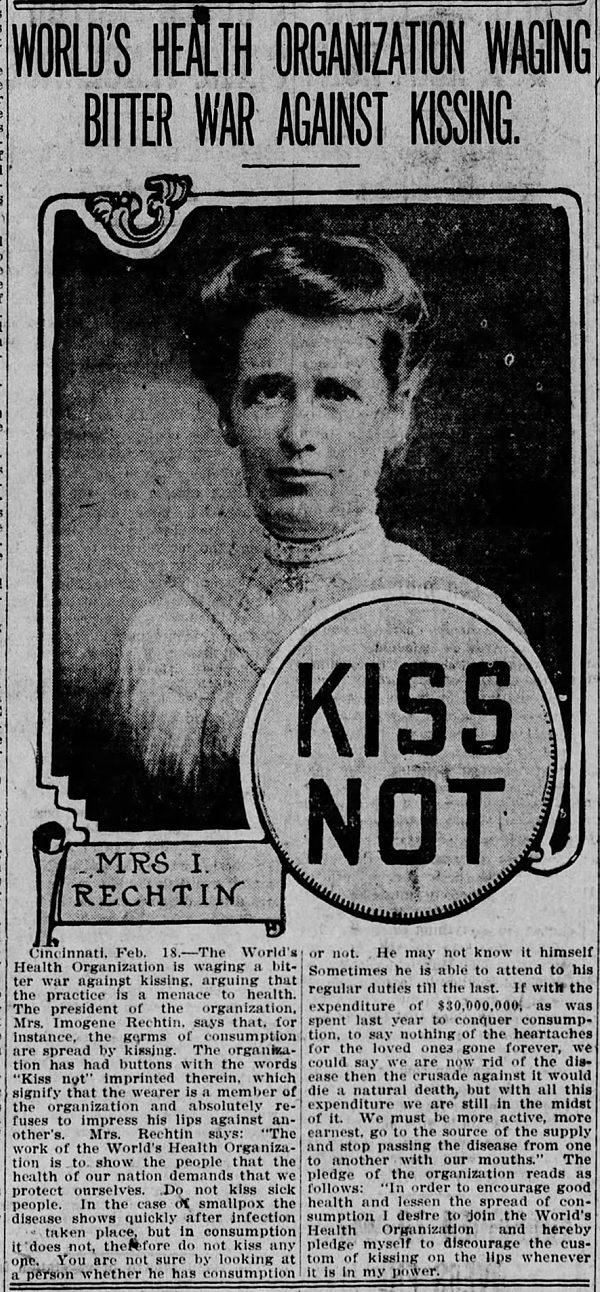
Posted By: Alex - Mon Feb 02, 2015 -
Comments (11)
Category: Hygiene, 1910s
Breaks Will
A great moment in the history of 'oops': Back in 1911, a lawyer accidentally tripped and smashed the phonograph record on which Hodson Burton had recorded his final will, revealing where he had hidden his fortune. (If this lawyer was true to form, I'd guess he still made sure to submit a bill for his services.)I wonder if Hodson Burton's fortune has ever been found.
Posted By: Alex - Sun Feb 01, 2015 -
Comments (6)
Category: Law, 1910s
Rolling to Reduce
Weight reduction advice from 1918. Original article here (pdf).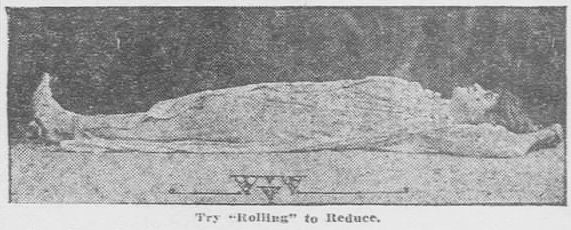
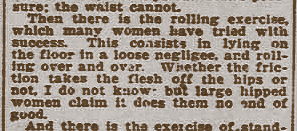
Posted By: Alex - Sun Jan 18, 2015 -
Comments (2)
Category: Exercise and Fitness, 1910s
The Sunshine Belt
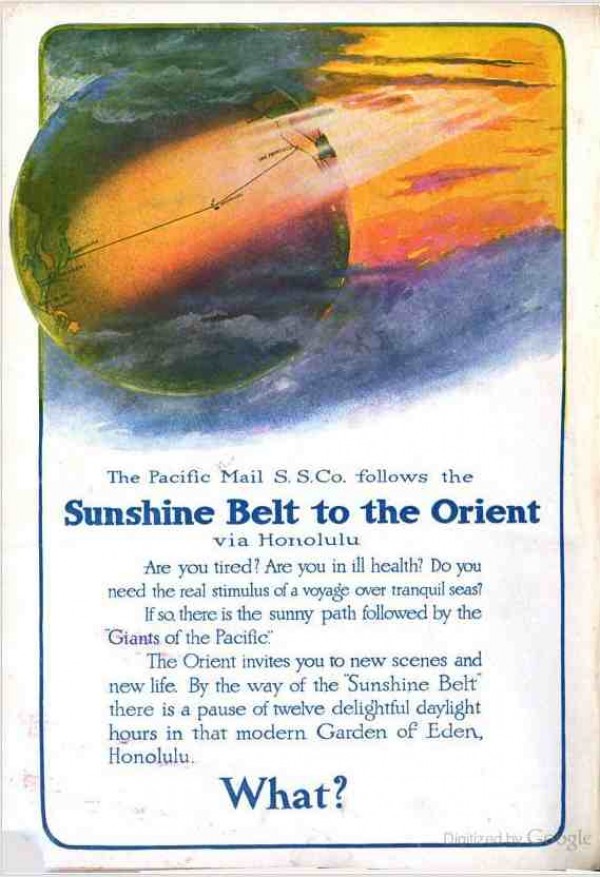
As Alex showed us earlier, Florida merited a celestial spotlight to be shone upon it. But it was not the only favored land!
Original ad here.
Posted By: Paul - Fri Jan 16, 2015 -
Comments (5)
Category: Geography and Maps, Advertising, 1910s, South Pacific
Open in 2015

Kemp Plummer Battle
This box is to be opened in 1965, A.D., and again in 2015, A.D., and a student designated by the President of the Society shall write a thesis on the change of the preceding semi-centennial period. I request my descendants of those dates to pay $50 (fifty dollars) to the writer of the thesis. I have no doubt that payment will be duly made, as I have seven children and grandchildren, married and doing well, who agree to this proposal. As I have also four great-grandchildren, it is almost certain that my descendants will be numerous fifty and one-hundred years hence.
That the changes will be great and important in the articles in use in 1965 and 2015 may be gathered from the fact that the railroad system, telegraphs, telephones, the machines worked by electricity, air craft, submarines, and hundreds of other inventions, have been made practical since I was born, and most of them within fifty years.
As per his instructions, Battle's box was opened in 1965, revealing the contents to be the Montgomery Ward Catalog of 1915. An essay competition was organized and the winning essay was titled "Great and Important Changes: The Machine Age in North Carolina as seen by comparing Montgomery Ward & Company's catalog of 1915 with that of 1965."
It's now 2015 — time for Battle's box to be opened again and another essay written. However, I haven't been able to find any sign that an essay competition is being organized. Though I did come across a 2012 post on the North Carolina Miscellany blog wondering if a competition would be organized.
Of course, the Montgomery Ward catalog is no longer produced. So a direct comparison of catalogs from 1915, 1965, and 2015 wouldn't be possible. But there is the Wards.com website. So an essay writer could compare the site to the old catalog.
Incidentally, the 1915 Montgomery Ward Catalog sealed in Battle's box isn't the only one of its kind. There are other extant copies of the catalog from that year. For instance, one sold recently on eBay for $50. See the pictures of it below.
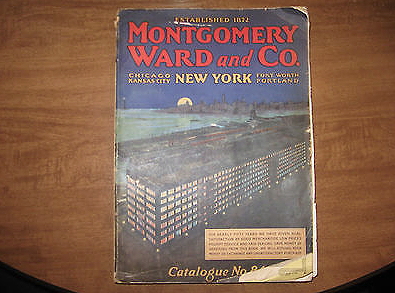
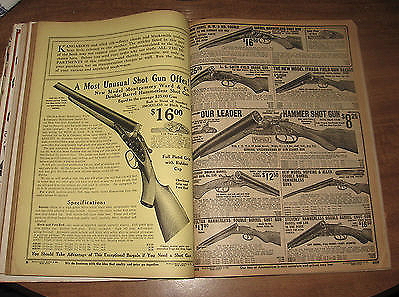
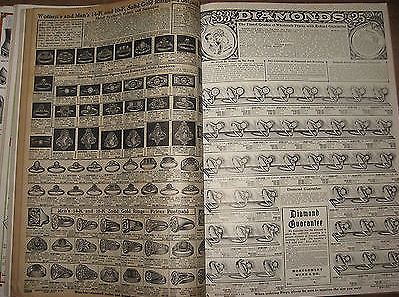
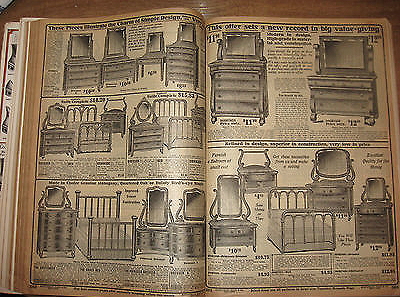
Posted By: Alex - Thu Jan 01, 2015 -
Comments (7)
Category: 1910s
Teaching history and science by dance
Marian Morgan believed that dance could be used to enhance the instruction of just about any subject. And back in 1916, she toured the country with her six dancers, demonstrating how dance-enhanced education would work.The basic theory was that students would pay more attention if young female dancers performed at the front of the classroom as the lecturer talked. For example, as explained by the Washington Post (Aug 20, 1916):
What happened? Has Old Bones (his disrespectful nickname for the professor of chemistry) been rooting around some second-hand store and found Aladdin's lamp?
The freshman's perception, newly acute, pierces his usual mental haze. The scene is a real one and delightful. True, 'Old Bones' is continuing his discourse. He is describing the chemistry of the blood. 'But this war of atoms may be a beneficent one,' he drones. 'The presence of disease-breeding bacilli in the blood is not necessarily destructive. For there are vigilant baccilli who lay hold upon the destroyers and slay them, as you see illustrated by this dance.'
The eyes of the freshmen beam. Never have 'Old Bones'' lectures been rewarded by such rapt and flattering attention. On the platform one lithe young Amazon in short Roman tunic is struggling with another.
Too bad this never caught on. Certainly would have improved a lot of lectures I had to sit through back in my college days.


Morgan's dancers
More in extended >>
Posted By: Alex - Mon Dec 22, 2014 -
Comments (9)
Category: Education, Universities, Colleges, Private Schools and Academia, 1910s, Dance
Shun the Mustache Kiss!
We're now three weeks into Movember. So this seems like timely advice from the Washington Post - Apr 28, 1912.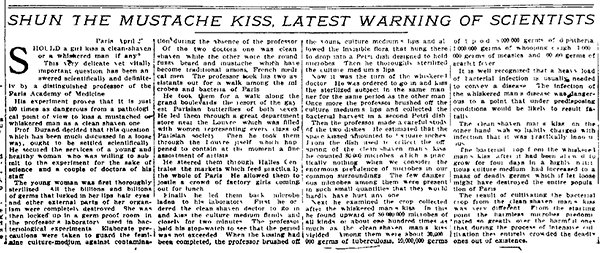


Posted By: Alex - Tue Nov 25, 2014 -
Comments (3)
Category: Hygiene, Experiments, 1910s, Hair and Hairstyling

| Who We Are |
|---|
| Alex Boese Alex is the creator and curator of the Museum of Hoaxes. He's also the author of various weird, non-fiction, science-themed books such as Elephants on Acid and Psychedelic Apes. Paul Di Filippo Paul has been paid to put weird ideas into fictional form for over thirty years, in his career as a noted science fiction writer. He has recently begun blogging on many curious topics with three fellow writers at The Inferior 4+1. Contact Us |





